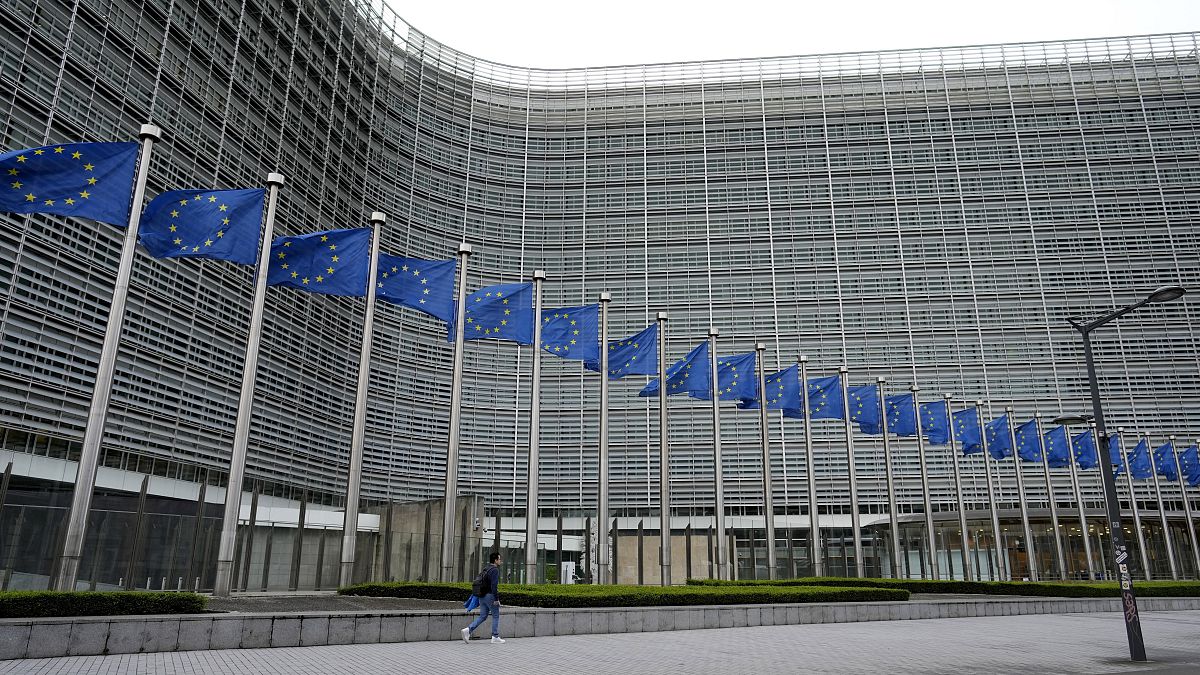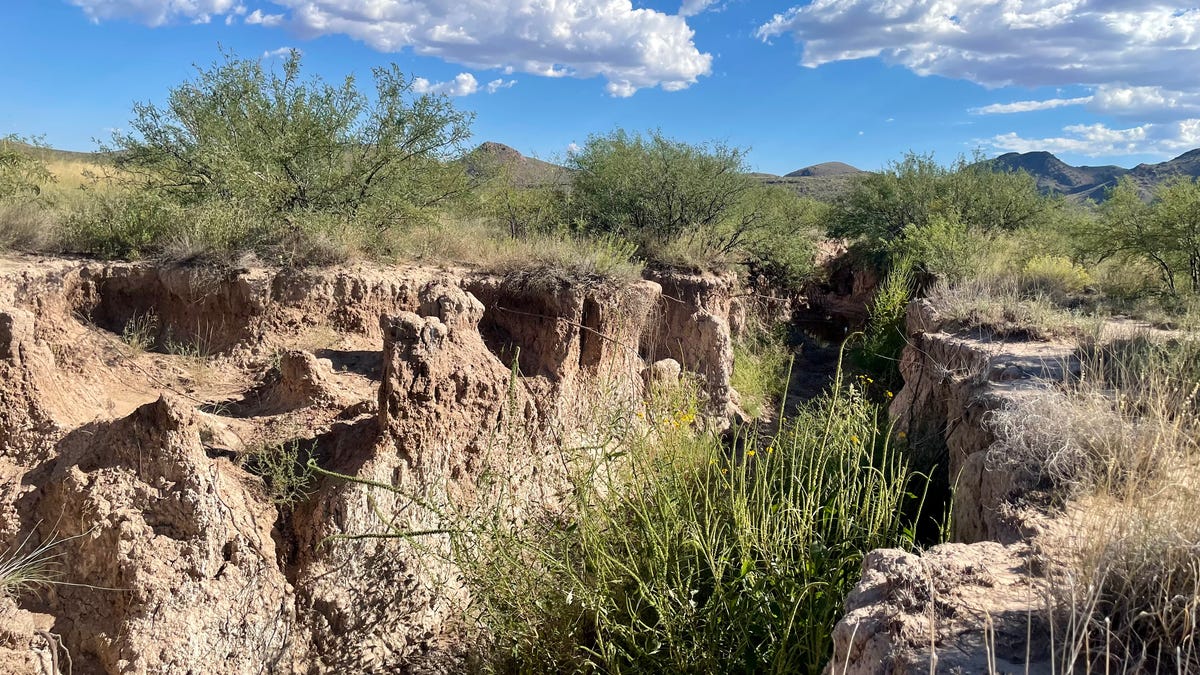World
Loss & Damage Fund will be key test for COP success on climate finance
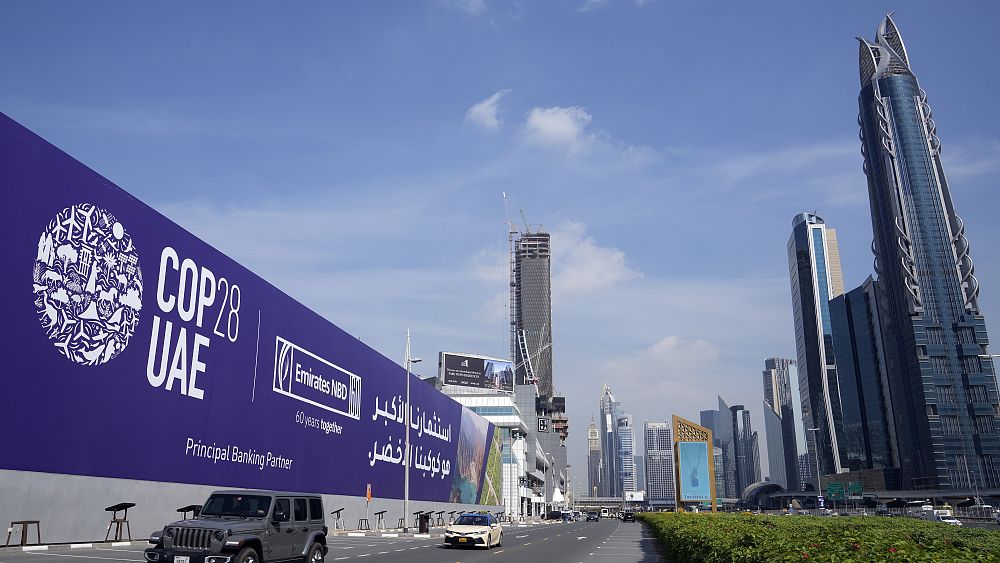
Finance is set to be at the heart of COP28, the UN climate summit starting on Thursday in Dubai, with economists saying that around $1 trillion per year is needed to support developing countries in their fight against climate change.
Pakistan is a prime example of a country in dire need of help, given how poor it is and the impact climate change is already having on it, with the whole country almost completely flooded in 2022.
Although it emits less than 1% of the world’s greenhouse gas emissions, natural disasters are becoming ever more common and devastating.
During COP28, an agreement is expected to be reached on how much money will go to a new Loss and Damage Fund. It is intended to pay for the costly consequences of extreme weather events.
The World Bank is the provisional host of the fund and prefers to provide loans rather than grants for this purpose.
On the other side, developing countries in the so-called Global South would prefer an independent body to host the fund, but the main discussion will be about how much money to invest and which countries will contribute.
“The European Union has clearly signalled (…) its willingness to support this with contributions that are substantial, which is likely going to be on the level of billions of euros,” Cecilia Trasi, an analyst from Brussels-based think tank Bruegel, told Euronews.
“On the other hand, the US envoy John Kerry has also announced contributions of millions of dollars, which is on a very different scale of magnitude and still open is the question of will countries that were considered developing in 1992, like Saudi Arabia and China, will they contribute or not?.”
The European Parliament will send a 12-member delegation to the conference. Socialist & Democrat MEPs, included in the group, have defended high money contributions, saying that it helps to show global solidarity.
The political group will propose, in the coming months, that a similar fund be created just for the EU.
“We need to help people adapt to the new situation. We need to help farmers so that they can continue to grow crops that are much more resistant and resilient when it comes to climate change,” Mohammed Chaim, a Dutch socialist MEP said in an interview.
“Because at the end of the day, if we help vulnerable communities, we create support for the European Green Deal and that is something that we all benefit from.”
For Trasi, the EU can use this instrument to resolve imbalances member states face when it comes to dealing with climate change.
“It would be very interesting to see how this would affect all discussions about fiscal reform, quite simply because perhaps one way of resolving this issue would be to allow more room for manoeuvring to countries that are in difficulty, but that are also suffering the worst consequences of climate change,” the analyst told Euronews.
Previous financial promises yet to be fulfilled
Rich countries are still missing out on the first fund created in 2019. The UN’s Green Climate Fund was supposed to have collected $100 billion (€91.5 billion) a year to help developing countries invest in the transition to clean energy systems.
“The harsh reality is that $100 billion is probably just a drop in the ocean of developing countries’ actual transition needs, which are estimated to be in the billions. Thus, the entire transition is estimated at $4.4 billion (€4 billion) and so we clearly see that we need to increase ambitions in terms of climate financing,” explained Trasi.
The right-leaning European People’s Party (EPP) said that it should be realised as soon as possible.
“At the end of the day, we have to acknowledge the fact that the EU is indeed doing its best for climate transition, but if we do not do it along with the US, China and India, we cannot mitigate climate change,” Portuguese EPP MEP, Lidia Pereira told Euronews.
The EU can also play a role by expanding its domestic capacity to produce renewable energy systems that can be exported to the rest of the world, but investment within the bloc is lacking, she added.
“We need to raise more capital, public and private because we have a prominent position in the development of clean technologies. We have many start-ups flourishing across Europe, but they lack the capital to expand their operations,” Pereira said.
Chaim also advocates for more cooperation to transfer clean technology and partnerships involving the private sector, to create a cycle of mutual benefit
“All of Africa has fewer solar panels than a country like the Netherlands. Imagine the results of giving them access to affordable and sustainable solar panels?” he told Euronews.
“One day we could even import this cheap and sustainable energy to Europe. Everyone would benefit from this because the EU is a net importer of energy.”
Jorge Moreira da Silva, executive director at the UN Office for Project Services said in an interview that climate action “would require $4-6 billion (€3.6-€5.5 billion) every year and that the majority of this amount should go to developing countries.”
“Infrastructure is responsible for almost 80% of greenhouse gas emissions,” he added.
“We need to support developing countries with additional financing so they can access energy that is affordable, that is sustainable, that is clean and that is inclusive and then we also need to deal with loss and damage, and adaptation.”
At the same time, with climate change worsening and the intensity and frequency of natural disasters, more and more infrastructure needs to be rebuilt or replaced with more environmentally friendly versions.
Thousand of politicians and scientific advisors at COP28 are expected to issue recommendations on a new framework for international climate finance, as well as a definitive roadmap on how to implement them.

World
EU preparing sanctions on Russia's 'shadow fleet' after cable damage

Countries in the region have been on alert following a string of incidents involving undersea cables and gas pipelines in the Baltic Sea since 2022.
The EU Foreign Policy chief has said the bloc is preparing sanctions on what it calls Russia’s ‘shadow fleet’ after an undersea power cable connecting Finland and Estonia was damaged in the Baltic Sea.
Kaja Kallas posted the joint statement from the EU Commission and the High Representative leading the investigation on X, saying the “suspected vessel is part of Russia’s shadow fleet, which threatens security and the environment, while funding Russia’s war budget.”
Kallas also said the EU was strengthening efforts to protect undersea cables, adding that there was no risk to regional electricity supplies.
That comes after Finnish authorities detained a Russian ship as part of an investigation into damage to the Estlink-2 power cable.
It carries electricity from Finland to Estonia across the Baltic Sea and went down on Wednesday.
Finnish police and border guards boarded the Eagle S vessel on Thursday and took over the command bridge, Helsinki Police Chief Jari Liukku said at a press conference.
The vessel was being held in Finnish territorial waters, police said.
The Eagle S is flagged in the Cook Islands but was described by Finnish customs officials and the European Union’s executive commission as part of Russia’s shadow fleet of fuel tankers.
Those are aging vessels with obscure ownership, acquired to skirt Western sanctions and operating without Western-regulated insurance.
Russia’s use of the vessels has raised environmental concerns about accidents given their age and uncertain insurance coverage.
The Eagle S’ anchor is suspected of causing damage to the cable, Yle television reported, citing police statements.
The Estonian government met in emergency session over the incident.
The shadow tankers “are helping Russia to earn funds that will aid Russian hybrid attacks,” Prime Minister Kristen Michal said at a news conference.
“We need to improve the monitoring and protection of critical infrastructure both on land and on sea.”
He said repairs to the cable could take as long as seven months.
“Repeated damage to Baltic Sea infrastructure signals a systemic threat, not mere accidents,” Estonia’s President Alar Karis said on X.
“Estonia will take action to counter this threat, together with Finland and other NATO allies.”
On high alert
Countries in the region have been on alert following a string of incidents involving undersea cables and gas pipelines in the Baltic Sea since 2022.
Two data cables — one running between Finland and Germany and the other between Lithuania and Sweden — were severed in November.
Germany’s defence minister said officials had to assume the incident was “sabotage,” but he didn’t provide evidence or say who might have been responsible.
And the Nord Stream pipelines that once brought natural gas from Russia to Germany were damaged by underwater explosions in September 2022.
Authorities have said the cause was sabotage and launched criminal investigations.
World
Saudi executions rose sharply in 2024

World
Israel launches strikes in Yemen on Houthi military targets, IDF says
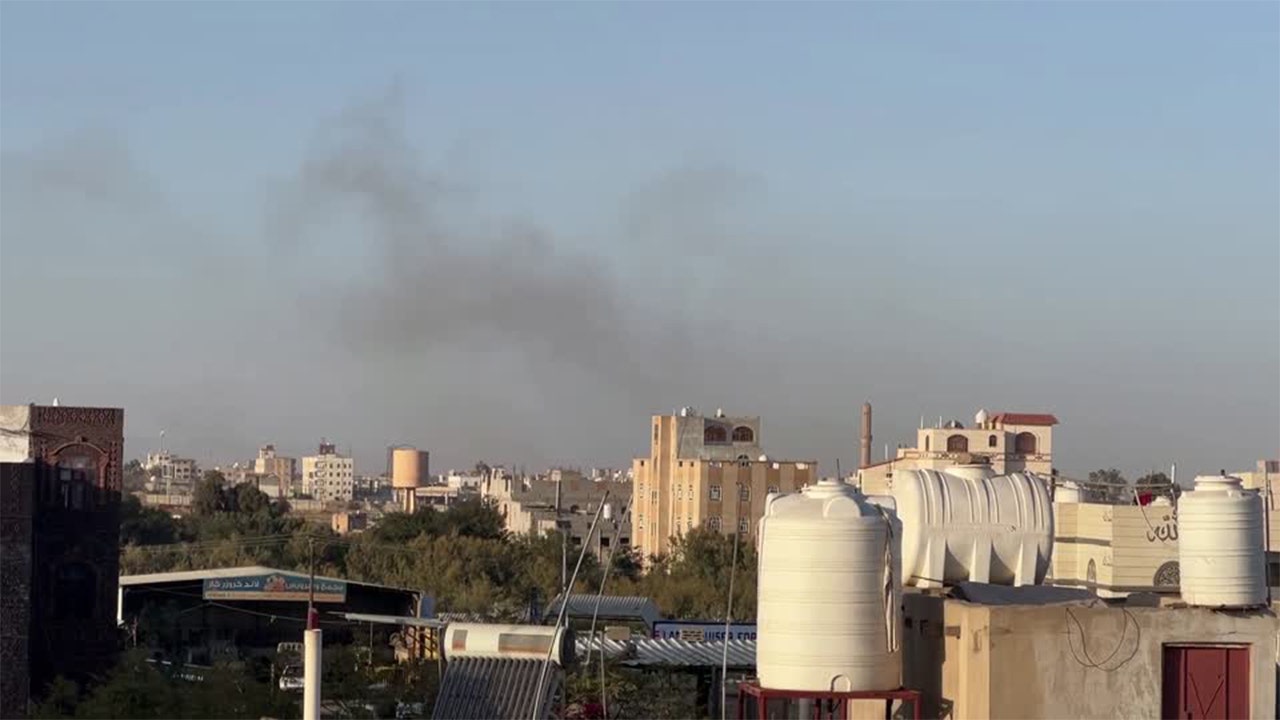
The Israeli military claimed responsibility for a series of airstrikes in Yemen on Thursday that hit Sana’a International Airport and other targets in the Houthi-controlled capital.
The Israel Defense Forces said the strikes targeted military infrastructure used by the Houthis to conduct acts of terrorism.
“The Houthi terrorist regime has repeatedly attacked the State of Israel and its citizens, including in UAV and surface-to-surface missile attacks on Israeli territory,” the IDF said in a statement.
“The targets that were struck by the IDF include military infrastructure used by the Houthi terrorist regime for its military activities in both the Sana’a International Airport and the Hezyaz and Ras Kanatib power stations. In addition, the IDF struck military infrastructure in the Al-Hudaydah, Salif, and Ras Kanatib ports on the western coast.”
PROJECTILE FROM YEMEN STRIKES NEAR TEL AVIV, INJURING MORE THAN A DOZEN: OFFICIALS
Black smoke rises near Sana’a International Airport in Yemen after reported Israeli airstrikes. (Reuters)
The strikes come days after Israel’s defense minister promised retaliation against Houthi leaders for missile strikes launched at Israel from Yemen.
Houthi rebels, who control most of northern Yemen, have fired upon Israel for more than a year to support Hamas terrorists at war with the Jewish State. The Houthis have attempted to enforce an embargo on Israel by launching missiles and drones at cargo vessels crossing the Red Sea – a major shipping lane for international trade.
US NAVY SHIPS REPEL ATTACK FROM HOUTHIS IN GULF OF ADEN

This photo released by the European Union’s Operation Aspides naval force shows the oil tanker Sounion burning in the Red Sea following a series of attacks by Yemen’s Houthi rebels, on Saturday Sept. 14, 2024. (European Union’s Operation Aspides via AP)
Overall, the Houthis have launched over 200 missiles and 170 drones at Israel since Hamas’s Oct. 7, 2023, massacre of 1,200 people. Since then, the Houthis have also attacked more than six dozen commercial vessels – particularly in the Bab-el-Mandeb, the southern maritime gateway to Egypt’s Suez Canal.
On Saturday, a projectile launched into Israel from Yemen struck Tel Aviv and caused mild injuries to 16 people, Israeli officials said. The incident was a rare occasion where Israeli defense systems failed to intercept an attack.
NETANYAHU WARNS HOUTHIS AMID CALLS FOR ISREAL TO WIPE OUT TERROR LEADERSHIP AS IT DID WITH NASRALLAH, SINWAR
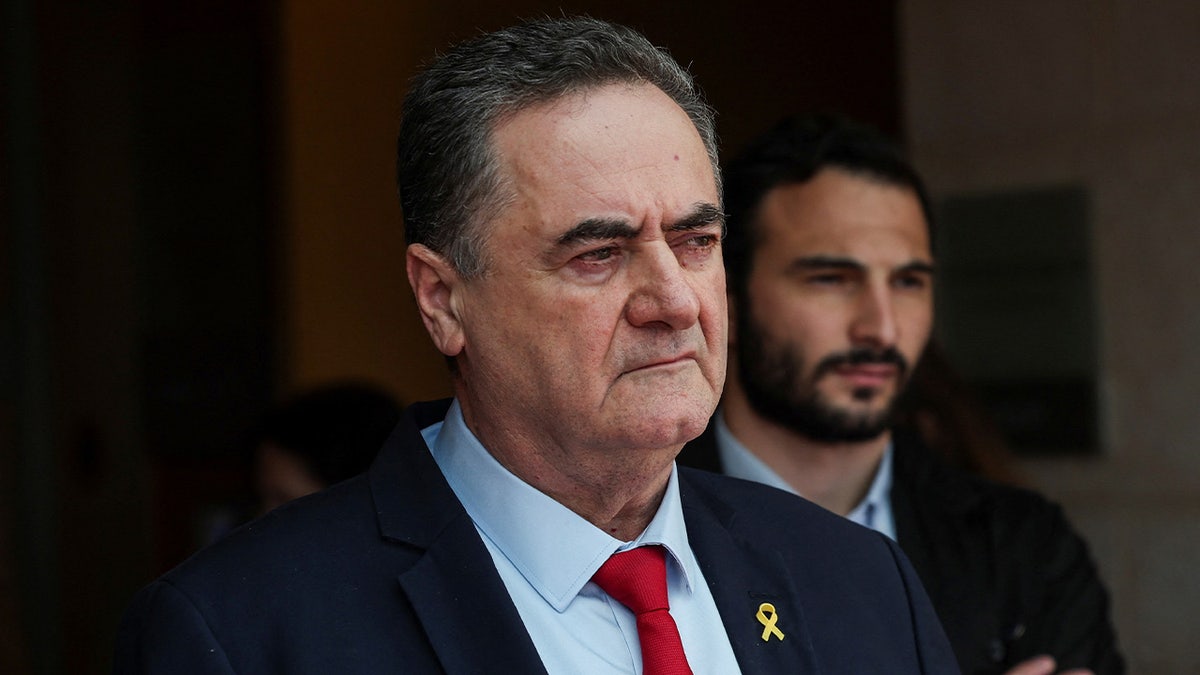
Israeli Defense Minister Israel Katz looks on, amid the ongoing conflict in Gaza between Israel and Hamas, in Jerusalem, November 7, 2024. (REUTERS/Ronen Zvulun)
Israel retaliated by striking multiple targets in areas of Yemen under Houthi control, including power plants in Sana’a.
Israeli leaders have vowed to eliminate Houthi leadership if the missile and drone attacks do not cease.
On Monday, Israeli Defense Minister Israel Katz said, “We will strike their strategic infrastructure and decapitate their leaders. Just as we did to [former Hamas chief Ismail] Haniyeh, Sinwar and Nasrallah, in Tehran, Gaza and Lebanon – we will do in Hodeidah and Sanaa.”
Prime Minister Benjamin Netanyahu has also urged Israelis to be “patient” and suggested that soon the military will ramp up its campaign against the Houthis.
“We will take forceful, determined and sophisticated action. Even if it takes time, the result will be the same,” he said. “Just as we have acted forcefully against the terror arms of Iran’s axis of evil, so too will we act against the Houthis.”
Fox News Digital’s Amelie Botbol contributed to this report.
-
/cdn.vox-cdn.com/uploads/chorus_asset/file/24924653/236780_Google_AntiTrust_Trial_Custom_Art_CVirginia__0003_1.png)
/cdn.vox-cdn.com/uploads/chorus_asset/file/24924653/236780_Google_AntiTrust_Trial_Custom_Art_CVirginia__0003_1.png) Technology6 days ago
Technology6 days agoGoogle’s counteroffer to the government trying to break it up is unbundling Android apps
-

 News7 days ago
News7 days agoNovo Nordisk shares tumble as weight-loss drug trial data disappoints
-

 Politics7 days ago
Politics7 days agoIllegal immigrant sexually abused child in the U.S. after being removed from the country five times
-

 Entertainment1 week ago
Entertainment1 week ago'It's a little holiday gift': Inside the Weeknd's free Santa Monica show for his biggest fans
-

 Lifestyle1 week ago
Lifestyle1 week agoThink you can't dance? Get up and try these tips in our comic. We dare you!
-
/cdn.vox-cdn.com/uploads/chorus_asset/file/25672934/Metaphor_Key_Art_Horizontal.png)
/cdn.vox-cdn.com/uploads/chorus_asset/file/25672934/Metaphor_Key_Art_Horizontal.png) Technology2 days ago
Technology2 days agoThere’s a reason Metaphor: ReFantanzio’s battle music sounds as cool as it does
-

 Technology1 week ago
Technology1 week agoFox News AI Newsletter: OpenAI responds to Elon Musk's lawsuit
-

 News3 days ago
News3 days agoFrance’s new premier selects Eric Lombard as finance minister


